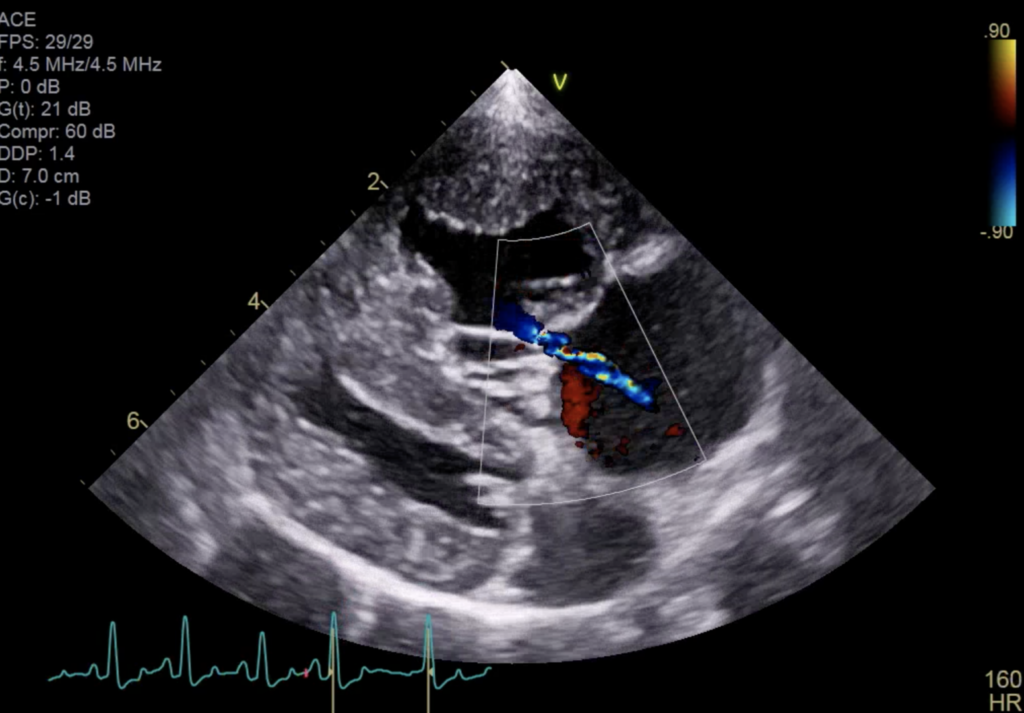
Fiedler M. Reverzní perzistující ductus arteriosus. Reverse persistent ductus arteriosus. Veterinární klinika 2022;19(5):151-155.
SOUHRN
Tento článek popisuje klinický případ vzácnější varianty perzistentního ductus arteriosus u pětileté feny křížence. Perzistující ductus arteriosus (PDA) představuje jednu z nejčastějších vrozených vad srdce u psů. Ductus arteriosus představuje normální strukturu, která je přítomna v průběhu fetálního vývoje a umožňuje průtok okysličené krve z pulmonální artérie do aorty. Pokud tato cévní struktura zůstane ve funkčním stavu přítomna, nazýváme ji perzistentní a tato přetrvávající cévní struktura
vede ke zkratové cirkulaci po narození plodu. U klasické varianty této vady dochází díky rozdílnému tlakovému gradientu systémové a plicní cirkulace ke zkratovému toku z aorty do pulmonální artérie. Tato varianta je z terapeutického hlediska příznivá a lze ji řešit uzavřením cévní spojky ligací, či intervenčními technikami pomocí různých druhů okluderů. U reverzního typu PDA nedochází po narození k poklesu pulmonální cévní rezistence a zkratový tok je pravolevý, tedy z plicnice do aorty,
tedy do systémové cirkulace.
SUMMARY
This article describes a clinical case of the rarer variant of persistent ductus arteriosus in a five-yearold female crossbreed. Persistent ductus arteriosus (PDA) is one of the most common congenital heart defects in dogs. The ductus arteriosus presents is a normal structure that is present during foetal development and enables the flow of oxygenated blood from the pulmonary artery into the aorta. If this vascular structure remains present in a functional state, we call it persistent, and this persistent vascular structure leads to shunting circulation after the birth of a foetus. In the classic variant of this defect, a short circuit flow from the aorta to the pulmonary artery occurs thanks to the different pressure gradient of the systemic and pulmonary circulation. This variant is promising from a therapeutic point of view and can be solved by closing the vascular junction by ligation, or interventional techniques using various types of occluders. In the reverse type of PDA, there is no decline in pulmonary vascular resistance after birth and the shunt flow is right-to-left, i.e. from the pulmonary artery to the aorta, i.e. to the systemic circulation.*